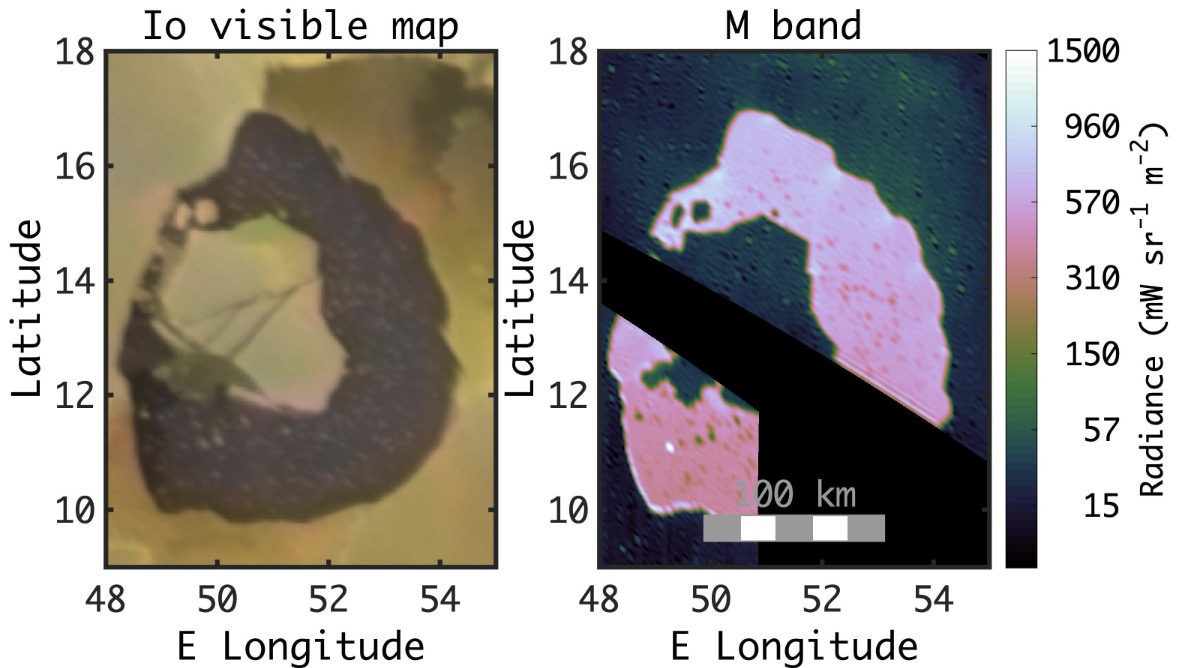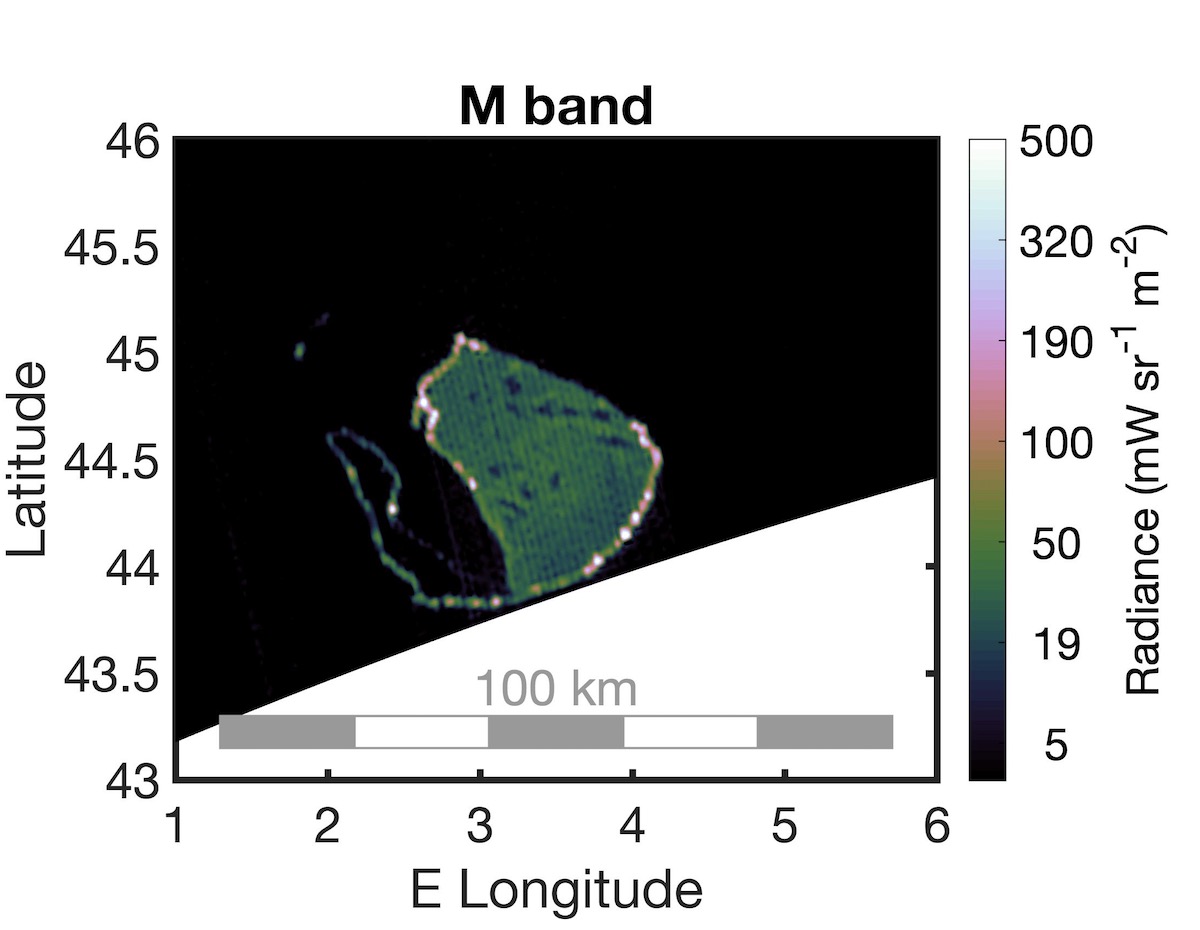Exploring the Distribution and Dynamics of Lava Lakes on Io: Insights from Juno Mission Data
- 1INAF, IAPS, Rome, Italy (alessandro.mura@inaf.it)
- 2JPL, California Institute of Technology, Pasadena, CA, USA
- 3SwRI, San Antonio, TX, USA
- 4Hawaii Institute Geophysics and Planetology, Honolulu, HI, USA
- 5PSI, Tucson, AZ, USA
- 6ASI, Rome, Italy
- 7Cornell, Ithaca, NY, USA
NASA's Juno mission has been studying Jupiter since 2016 from a polar, highly elliptical orbit. While not its primary goal, Juno has captured images and spectra of Jupiter's Galilean moons from advantageous positions using onboard cameras: JIRAM (Jovian InfraRed Auroral Mapper - infrared), JunoCam (visible), and SRU (Stellar Reference Unit - visible). Specifically, JIRAM is an instrument that combines a dual-band imager and spectrometer. Its imager has a single detector capable of capturing 2D images through two different filters: L band (3.3 to 3.6 µm) and M band (4.5 to 5 µm). The angular resolution of its pixels (0.01°) is sufficient for moon imaging, though the spatial resolution varies based on the spacecraft's distance from the moons. Initially around 100 km/pixel, it has improved to about 500 m/pixel during the closest approaches of Juno to Io. This study focuses on analyzing JIRAM's high-resolution images to understand the location, shape, and some thermal characteristics of volcanic thermal sources on the moons. Recent findings from data collected by NASA's Juno mission unveil shared thermal attributes among approximately 50 paterae on Io, Jupiter's moon. These features exhibit conspicuous "thermal rings," indicative of elevated temperatures, encircling their central floors. Prominent examples, including Loki, Surt, Fuchi, Amaterasu, Mulungu, Chors, and Dazhbog Patera, alongside numerous others, display such consistent surface temperature pattern. Analysis of this novel Juno/JIRAM dataset suggests that the presence of hot rings surrounding paterae is a prevalent occurrence, likely signaling the presence of active lava lakes. Notably, most scrutinized paterae lack recent lava flows on their flanks, implying that during the observation period, the lava lake levels remained below the rim. These findings offer valuable insights into the dynamic activity of paterae, suggesting potential mechanisms such as central magma upwelling or cyclical vertical movements akin to a piston. The intense tidal forces experienced by Io may contribute to these phenomena.The distribution of these lava lakes across the moons is investigated, anc comparisons with visible light images are also made. Notably, Loki Patera exhibits numerous islands in the same positions as seen in previous visible light images from Voyager, suggesting a consistent lava level.

Figure 1: Loki Patera as seen from Voyager (left, in the visible) and from JIRAM (right, in the infrared)

Figure 2: Pfu 1063 as seen by JIRAM
Acknowledgments
This work is supported by the Agenzia Spaziale Italiana (ASI). JIRAM is funded by the ASI–INAF Addendum n. 2016-23-H.3-2023 to grant 2016-23-H.0. Part of this work was performed at the Jet Propulsion Laboratory, California Institute of Technology, under contract with NASA.
How to cite: Mura, A., Tosi, F., Lopes, R., Zambon, F., Sordini, R., Bolton, S., Mouginis-Mark, P., Rathbun, J., Becker, H., Hansen-Koharchek, C., Adriani, A., Plainaki, C., Sindoni, G., Mirino, M., Nodjoumi, G., and Pettine, M.: Exploring the Distribution and Dynamics of Lava Lakes on Io: Insights from Juno Mission Data, Europlanet Science Congress 2024, Berlin, Germany, 8–13 Sep 2024, EPSC2024-528, https://doi.org/10.5194/epsc2024-528, 2024.